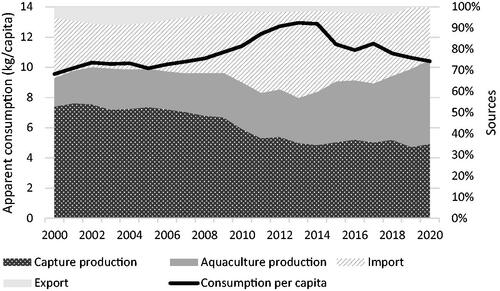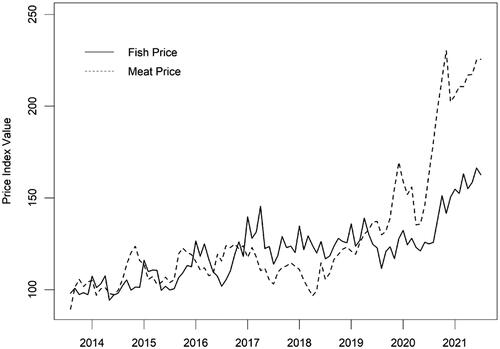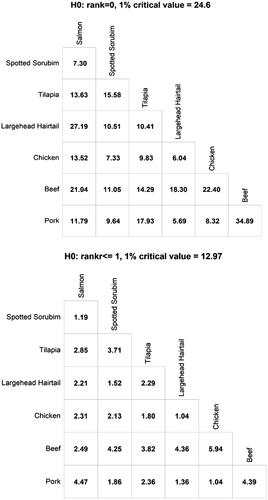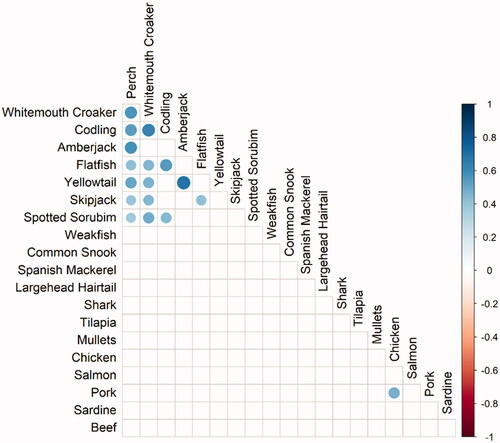Figures & data
Figure 1. Apparent seafood consumption per capita per year in Brazil, and its components (domestic production from capture and aquaculture, imports, and exports) from 2000 to 2020. Apparent consumption per capita is defined as production (from aquaculture and fisheries) plus imports minus exports, divided by population. Source: FAO (Citation2021) ans Seafood Brasil (Citation2021).

Table 1. Descriptive statistics of fish and meat prices.
Figure 2. Monthly fish and meat price indices for São Paulo August 2013 to July 2021. Source: CEAGESP (Citation2021) and CEPEA (Citation2021).

Table 2. Unit root test statistics.
Figure 4. Significant (p-value < 0.01) price level correlations among stationary fish prices. Significance evaluated using Newey West standard errors.

Figure 5. Trace test statistics for the rank of the bivariate cointegration matrix. A stable price relationship requires rejection of the first H0: r = 0 but non-rejection of H0: r < = 1, implying a common stochastic price trend. Specification assumes unrestricted constant, and lag order of the VAR testing equation selected according to the AIC with a maximum lag of 6 months.


